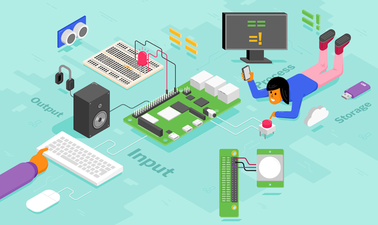- Level Awareness
- Ratings
- Duration 15 hours
- Course by Raspberry Pi Foundation
- Total students 2,102 enrolled
-
Offered by

About
On this course from the Raspberry Pi Foundation, you will be introduced to the world of physical computing. You will use input devices to capture data, process that data with the Python programming language, and then use output devices to get information back out from your computer.
Along the way, you will learn how to use the principles of sequence, selection, and iteration in your physical computing programs. You will also learn some foundational electronics to help you create the circuits that you will use.
In the final week, you will create a physical computing project of your own.
What you will learn
Over the following three weeks, you will:
- Develop understanding of how the Raspberry Pi can be used as a tool for physical computing.
- Apply knowledge of programming concepts to control digital inputs and outputs.
- Identify practical applications of inputs and outputs to make a project.
- Reflect on your learning and create ideas for your classroom practice.
- Identify ways of engaging learners in physical computing in your learning context.
Syllabus
You will cover:
- Input and output devices
- Python programming
- Use of variables, functions, and classes
- Applying design processes
- Project-based learning
Auto Summary
Discover the thrilling realm of physical computing with "Teaching Physical Computing with Raspberry Pi and Python." Offered by edX, this 15-hour course guides you through creating electronic circuits controlled by code. Ideal for beginners in personal development, it offers both Professional and Starter subscription options. Join now to enhance your coding and electronics skills!

James Robinson

Mac Bowley


